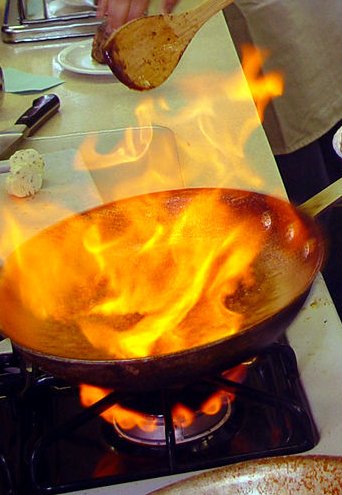
Double Click Poster for more information
We promise it will be fun and informative.
A blog dedicated to eating in the slow lane. Food history, recipes and food in culture

Shakespeare alludes to the story, as Orsino speaks of his love:
O, when mine eyes did see Olivia first,
Methought she purged the air of pestilence!
That instant was I turn'd into a hart;
And my desires, like fell and cruel hounds,
E'er since pursue me.
Twelfth Night 1.1.18-22
Had I the power that some say Dian had,
Thy temples should be planted presently
With horns, as was Actaeon's; and the hounds
Should drive upon thy new-transformed limbs,
Unmannerly intruder as thou art!
Titus Andronicus 2.3.61
And that my fellow gastronomes and lovers, brings us to Steak Diane on Valentine's day.In the 1930s, Perle Mesta became involved in the National Woman's Party. She lobbied for the Equal Rights Amendment, first as a Republican and then, after changing party affiliation in 1940, as a Democrat."Hang a lamb chop in the window," was the advice Perle Mesta gave those who wanted to make a place for themselves in Washington D.C.
She moved back to Washington, D.C., about 1940 and quickly became one of the capital's premier party hostesses. The guest list for her extravagant soirees included senators and congressmen of both parties, world leaders, Supreme Court justices, movie stars, foreign ambassadors, military leaders and White House personnel.
A Christian Scientist, Mesta didn't drink alcohol though she did serve alcohol at her parties. She claimed though that her parties gave her the same elation liquor gave other people.
She was an early supporter of Truman, serving on the Democrats' finance committee during his 1948 campaign and then acting as co-chairman of his inaugural ball. In 1949, Truman named her minister to Luxembourg. She was the first to hold the post -- and the third woman appointed to a foreign diplomatic post. She served until 1953, becoming the first woman to receive Luxembourg's highest honor, the Grand Cross of the Crown of Oak. As minister, she became famed again for her hostess skills. She threw "GI parties" for servicemen and women stationed in Europe.
She also became well known for her title. When asked how she wanted to be addressed, she replied, "Call me Madam Minister." The line was shortened to "Call Me Madam," which became the name of Irving Berlin's musical inspired by her life. The musical featured the song "The Hostess with the Mostes". Mesta was amused when the nickname stuck to her. Starring Ethel Merman, the show was a 1950-52 Broadway hit and was adapted into a 1954 Academy Award-winning film Call Me Madam.
After leaving Luxembourg, Mesta spent much of the next decade traveling the world. She met with the heads of 19 different governments, even touring Soviet Russia. She narrowly escaped death in 1955 after getting caught up in a riot between Communist and anti-Communist factions in Saigon, Vietnam.
In 1960, she published her biography, "Perle: My Story." She continued to give lavish parties into the early 1970s.
Here are the secrets:
You can apply these techniques to anything that benefits from caramelization. Now that you know those secrets, I’m going to leave you with a tip. NEVER discard the brown bits left in the pan after caramelizing meat. The French call this “fond.” I will tell you why I am fond of fond in a future post.


There are also few honorable mentions:
Modern Pastry (Boston, MA): Forget the long line at Mike's, the cannoli here is far better, and hardly anyone knows about it
Sunburst Grill (Denver, CO): It's a little mindboggling that Denver has super authentic Filipino food.
Four Winds Steakhouse (Wills Point, TX): delicious steak, even better setting
5-8 Club (Minneapolis, MN): Jucy Lucy is a heavenly experience
Enoteca Vespaio (Austin, TX): fun place to kick back and enjoy some cannoli in Austin
The Turtle (Brownwood, TX): an unexpected gem in a very small town, the owner also makes outstanding gelatos
Soup & Salads
Soup of the Day
Windy Hill Mixed Greens
white balsamic herb vinaigrette, candied pecans, gorgonzola cheese crumbles
Add grilled chicken, salmon or asian grilled tuna salad for $5
Center Avenue Caesar
hearts of romaine with handmade dressing, grated parmesan cheese, croutons
Add grilled chicken, salmon or asian grilled tuna salad for $5
Insalata Caprese
sliced roma tomatoes, basil, fresh mozzarella, balsamic vinegar
Brunch
Mary’s Quiche
egg custard with ham, cheddar cheese, a touch of roasted peppers in a
light flaky crust, side of steamed broccolli
Eggs Benedict
Two poached eggs, canadian bacon, 1910 English muffin smothered in
hollandaise with country style home fries
Creme Brulee French Toast
Our challah bread baked in creme brullee custard, maple syrup, bacon,
with country home fries
Monte Cristo
ham, turkey, swiss cheese on challah sandwich dipped in french toast
batter - grilled, maple syrup with country home fries
Grilled Chicken Sandwich
grilled chicken topped with dill havarti cheese on a toasted cranberry
orange English muffin, mixed greens with white balsamic vinaigrette,
home made chips
Asian Grilled Tuna Salad Sandwich
chopped grilled ahi tuna, crunchy oriental vegetables, chow mein
noodles, pineapple, wasabi mayonnaise, secret spices, on a challah roll,
home made chips
Chicken Fried Beef Tenderloin
buttermilk battered fork tender beef tenderloin, mashed potatoes,
real cream gravy and french green beans
Pecan Crusted Chicken
pecan crusted chicken breast with carrots and potatoes in a honey
butter sauce
Slow Roasted Prime Rib
Thomas’s amazing 10 oz prime rib, mashed potatoes, au jus, french green beans
Chalkboard Specials